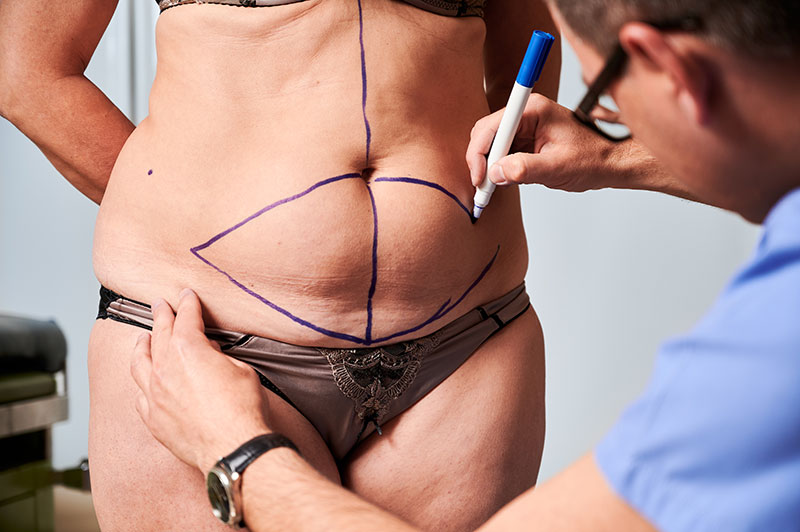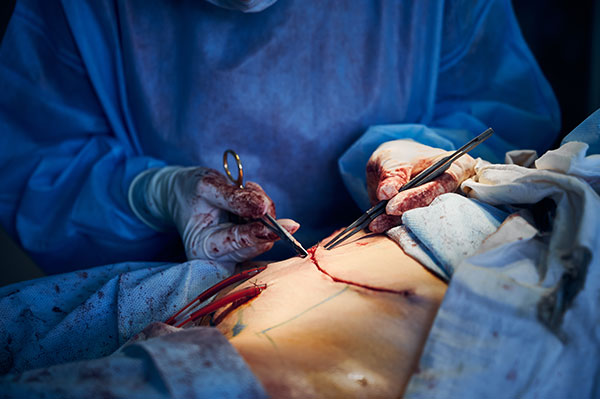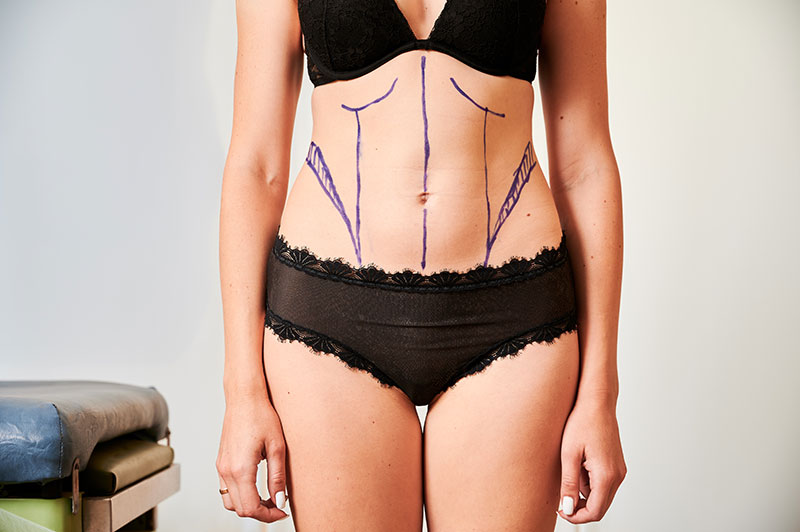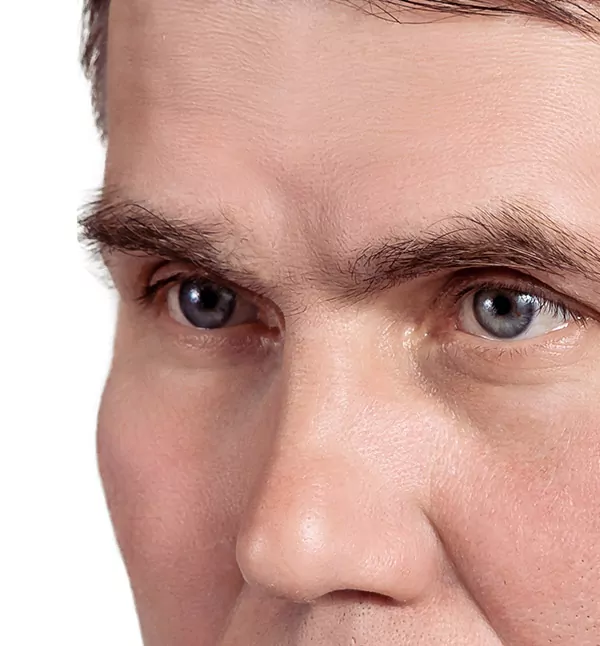
Abdonimoplasty (Tummy Tuck)
It can involve removing excess loose skin, fat and stretch marks and tightening the abdominal muscles.
The aim is to remove excess skin on the tummy that cannot be removed through exercise – for example, excess skin caused by pregnancy or losing a lot of weight.
It’s not a quick fix for losing weight as the procedure is usually only recommended for people with a healthy body mass index (BMI).
Types of Abdonimoplasty
Abdominoplasty is not a procedure for someone who is overweight. If you’re overweight, read these tips to help you lose weight.

Procedure

What does it Involve?
There are 2 types of abdominoplasty, and both are usually done under a general anaesthetic.
A partial abdominoplasty involves:
- making a large cut (incision) across the lower tummy
- separating the skin from the abdominal wall below the belly button
- removing excess fat and skin
- pulling together the remaining skin and stitching it in place
A full abdominoplasty involves:
- making a large incision across the lower tummy, from hip to hip, just above the pubic area
- making a second incision to free the belly button from the tissue that surrounds it
- separating the skin from the abdominal wall
- realigning the abdominal muscles
- removing excess fat and skin
- cutting a new hole for the belly button and stitching this back in place
- pulling together the remaining skin and stitching it in place
The operation can take between 2 and 5 hours. Most people need to stay in hospital for a few nights.
You will probably be in some pain after you wake up from the general anaesthetic. Painkilling medicine can be provided if needed.
You will leave hospital with dressings and a pressure garment (corset) on your tummy, or tummy-control pants. Someone will need to drive you home and stay with you for the following 24 hours.
Recovery
You will need to take about 4 to 6 weeks off work and exercise. You will not be able to drive for a few weeks after the operation (your surgeon and insurance company can advise you about this).
It takes about 6 weeks to fully recover and to see the full effect of a tummy tuck.
You’ll usually need to wear a special type of corset or tummy-control pants for 6 weeks, to encourage your skin to heal properly and to reduce any swelling. Generally, you’ll need to take it easy during this time and keep your knees bent while in bed, to avoid putting strain on your stitches.
After a few weeks you will probably be asked to attend a follow-up appointment to make sure the wound is healing properly.
After 6 weeks you will usually be able to stop wearing a corset and may return to doing most of your usually activities.
Side effects to expect
You will be left with a scar running across your lower tummy and, if you had a full abdominoplasty, a scar around your belly button.
It’s also common after an abdominoplasty to:
- find it difficult to stand up straight – it may feel like your tummy is being pulled (this will improve over time)
- have pain and bruising
- feel numbness in your tummy for a few months to years
- have a temporary fluid-filled swelling above the scar
- have raised scars that may look red or different from your usual skin colour – they should fade over 12 to 18 months
What could go wrong
Abdominoplasty can occasionally result in:
- thick, obvious scars developing
- bulges under the skin
- “dog ears” (extra skin) at the edges of the scar
- wounds failing to heal
- a collection of fluid in the area that was operated on
- a collection of blood underneath the skin (haematoma)
- numbness or pain in the tummy or down the leg
- tummy cramps or pain
- breathing problems
Any type of operation also carries a small risk of:
- excessive bleeding
- developing a blood clot in a vein
- infection
- an allergic reaction to the anaesthetic (very rare)
The surgeon should explain how likely these risks and complications are, and how they would be treated if they happened.
Occasionally, people find the desired effect was not achieved and feel they need another operation.
What to do if you have problems
Cosmetic surgery can sometimes go wrong and the results may not be what you expected.
You should contact the clinic where the operation was done as soon as possible if you have severe pain or any unexpected symptoms.
If you have abdominoplasty and are not happy with the results, or you think the procedure was not done properly, you should take up the matter with the surgeon who treated you.






